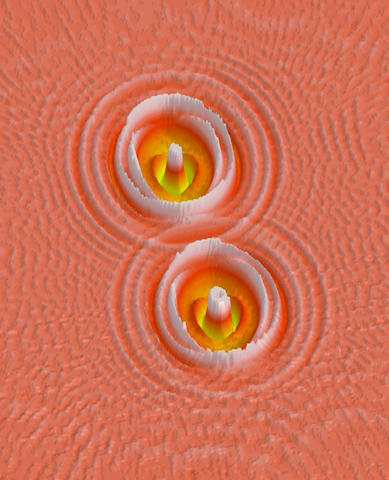
The Center for Spintronic Materials in Advanced Information Technologies (SMART) will be led by and housed at the University of Minnesota Twin Cities and will include researchers from the Massachusetts Institute of Technology, Pennsylvania State University, Georgetown University and the University of Maryland. Through nCORE, NIST will provide $7.5 million over four years, funding that will be matched with a $2.8 million contribution from the SMART partners.
Spintronics focuses on the magnetic “spin” properties of electrons, as opposed to their charges, which is the focus of electronics. Spintronics offers advantages over electronics such as higher speeds, lower energy needs and increased stability under certain conditions. Advances in the materials needed for spintronics devices could enable new computational systems, including neuromorphic systems inspired by the human brain that promise to dramatically improve the efficiency of important tasks.
The new center is bringing together top experts in the fields of spintronic materials and device research. According to the SMART team proposal, the center will be “driven by the need for innovative memory and processing architectures that promise to significantly improve the energy efficiency, throughput, and overall functionality of tomorrow’s computing paradigms; in particular, neuromorphic computing, probabilistic computing, in-memory computing, and wave-based information processing.”
NIST launched the nCORE consortium in 2017 with SRCco, a not-for-profit subsidiary of the Semiconductor Research Corporation. The $2.5 million-per-year public-private partnership supports basic research focused on the long-term needs of industry in the areas of future computing and information processing. The precompetitive research supported by nCORE explores fundamental materials, devices and interconnect solutions to enable future high-performance computing beyond conventional transistor technologies and classical information processing and storage.
The first nCORE center, NEW LIMITS, was launched in 2018, to develop and study new materials that will be applied in unique logic, memory and interconnect applications to enable novel computing and storage paradigms.
NIST promotes U.S. innovation and industrial competitiveness by advancing measurement science, standards and technology in ways that enhance economic security and improve our quality of life. NIST is a non-regulatory agency of the U.S. Department of Commerce. To learn more about NIST, visit www.nist.gov.

